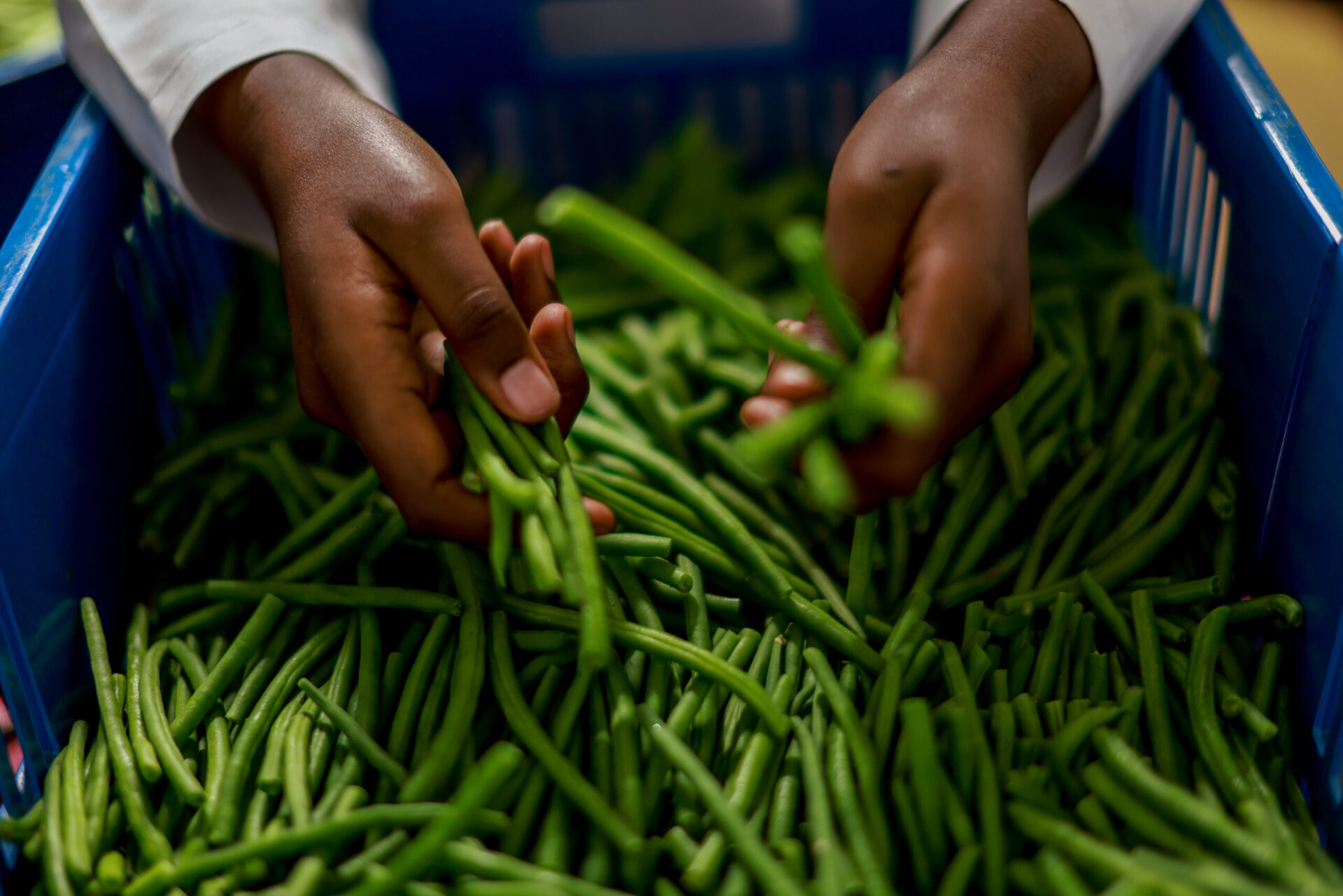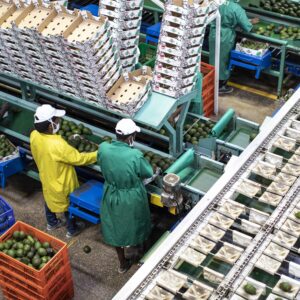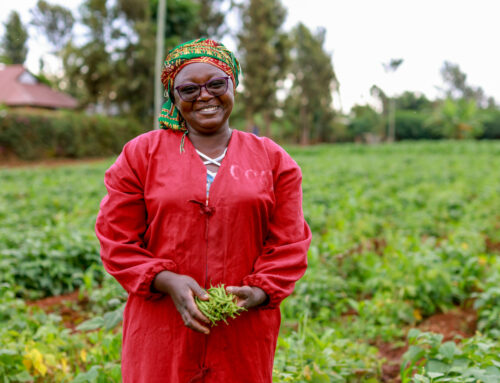How can agribusinesses access markets in new food supply systems?
The agribusiness industry is undergoing a period of considerable changes across numerous fronts. These include changing consumer food preferences, strong consumer demand for high-value commodities (such us processed products and pre-prepared foods), new procurement systems at the supermarket level, stricter food safety regulations, and the fast emergence of new agricultural technologies and information systems.
Changes in the Agribusiness Industry
These new trends in food systems are accompanied by three widespread changes in food marketing channels: the transformation and consolidation of the retail food sector; the expansion of the food processing sector; and the growth of the food service industry, including restaurants. These changes are occurring quickly in most developing countries, but most rapidly in middle-income countries. Studies estimate rapid growth within these new food marketing channels:
- Annual global sales of processed foods have doubled in the last decade. The food processing market size was valued at USD 134.21 billion in 2021, projected to grow from USD 163.79 Billion in 2022 to USD 400.43 Billion by 2030.
- The growing middle classes in developing nations around the world are the key market drivers enhancing market growth, while they are becoming conscious about sanitary conditions of the processing of foods they are consuming.
- The agricultural and food processing industry is seeing the economic opportunities that the healthy processed foods market is bringing, for which heavy investments in technology with advanced equipment, assuring better hygienic and safe conditions of foods.
- Equipment for cleaning, sorting, grading cutting, peeling, and grinding is seeing increased demand. As well the demand for temperature-controlled spaces and storage, such as cold rooms, freezers, and processing facilities such as packhouses and slaughterhouses is growing.
- The growth of large-scale retail outlets, including supermarkets and hypermarkets, has resulted in the sector accounting for 35-70% of total food sales in middle-income and some emerging markets. Just in Latin America, for example, the top five supermarket chains in each country account for approximately 65% of food sales. Additionally, an increasing number of supermarkets are owned by multinational companies.
- Walmart and Carrefour are among the leading food retailers worldwide, with sales forecasted to reach US$ 572.51 and 143.32 billion by 2019 respectively.
- In Africa, urban food markets are set to quadruple and food and beverage sales to reach US$1 trillion by 2030. Processed foods will account for the bulk of future urban food demand in Africa and smallholders and agribusinesses will capture a significant share of this demand through the existence of a domestic processing sector.
- Processing avocados in Kenya for the export market
- Cold storage of processed avocados in Kenya for the export market
Challenges and Opportunities for Agribusinesses
The fast and multi-faceted transformation of agricultural markets poses challenges—as increasingly connected markets become more and more competitive—but also opens up vast opportunities for agribusinesses. The successful integration of agribusinesses into new food marketing channels will depend to a great extend on how they can respond quickly to these new trends and demands.
Lack of access to market information is one of the major constraints that small and growing agribusiness in emerging markets face when trying to access and sell into new markets. Understanding how actors along these food-marketing channels—i.e., consumers, processors and retailers—perceive value and the factors that influence their purchasing behavior is the key to successful commercialization.
In some contexts, an agribusiness’ access to off-taker markets is limited by its capacity to find and exploit new commercial opportunities. Agribusinesses may not be accustomed to investigating and accessing market alternatives, and consequently, they can be unaware of alternative opportunities and the requirements for accessing them (e.g., finance, sanitary and phyto-sanitary (SPS) requirements, technologies, certification, connections).
Having good market information is key for making wise decisions around marketing and sales strategies, and for determining which investments to make in value addition, packaging, safety compliance, and processing technology. Adopting innovations in those areas can help to differentiate and give a competitive advantage to small and growing agribusinesses.
- Supervision of compliance of food safety requirements through remote monitoring
- Off-taker supervision of cooling treatments applied
Many agribusinesses in emerging markets lack defined sales and marketing strategies, and rely instead on a more reactive approach to market opportunities. They frequently select sales and marketing channels on the basis of the immediate costs and income opportunities, rather than based on a strategic analysis of factors such as market competition and future sustainable growth. As a result, farmers and agribusinesses can often lose market opportunities or receive lower prices in the medium and long-term. Lower volumes of sales and prices are usually the result of an increased number of competing producers or the inability of an agribusiness to meet consumer expectations.
An agribusiness entering the food marketing system can avoid these risks and pitfalls by developing a sales and marketing strategy. Below we have summarized several points to consider when doing so:
Developing a sales and marketing strategy
- Have a planning process, and preferably, one that involves setting objectives and routes for reaching those objectives. Establish realistic sales forecasts and target prices.
- When selecting your food marketing channels, consider what you can offer, what can you deliver and the cost that implies entering that channel (for instance investment in technology, production methods and standards).
- Identify potential customers and assess the level of unfulfilled demand among consumers within defined marketing channels. It is advisable to estimate how much consumers within that market are currently spending on given products. By doing this type of market research, you will gain insights into how those customers might be better served.
- Consider the competitive structure of your market. Knowing who your potential competitors are, where they are located, and what services they provide are important pieces of information for your business. Take note of potential competitors who might have marketing advantages—such as lower production costs, better locations, and higher-quality produce—or who may provide potential consumers with similar products.
- Look for direct marketing opportunities, as these can represent an opportunity for obtaining higher prices. For instance, trade shows and events offer an opportunity to meet and do direct marketing to potential clients by making a brief presentation or sharing a brochure. Direct marketing is an alternative to product promotion, and can result in a very efficient customer cost of acquisition, even for relatively unknown brands.
- Establish a website landing page with key information on your product, and make sure to mention your website in all your all the promotional material. Embed in all your marketing and communications material—from email marketing to social network posts—a request for customers to visit your landing page (website or social networks company profile).
- Search for a Customer Relations Management System (CRM) that will allow you to register and track leads and potential customers. A CRM can help you measure results by comparing projected sales or generated leads for a given term with the actual sales or leads in a specific period.
- Look for cooperation for sourcing market information, for instance the integration with sector’s associations and networks its reliable way of sourcing sector’s updates, markets’ prices, marketing and sales opportunities (events).







